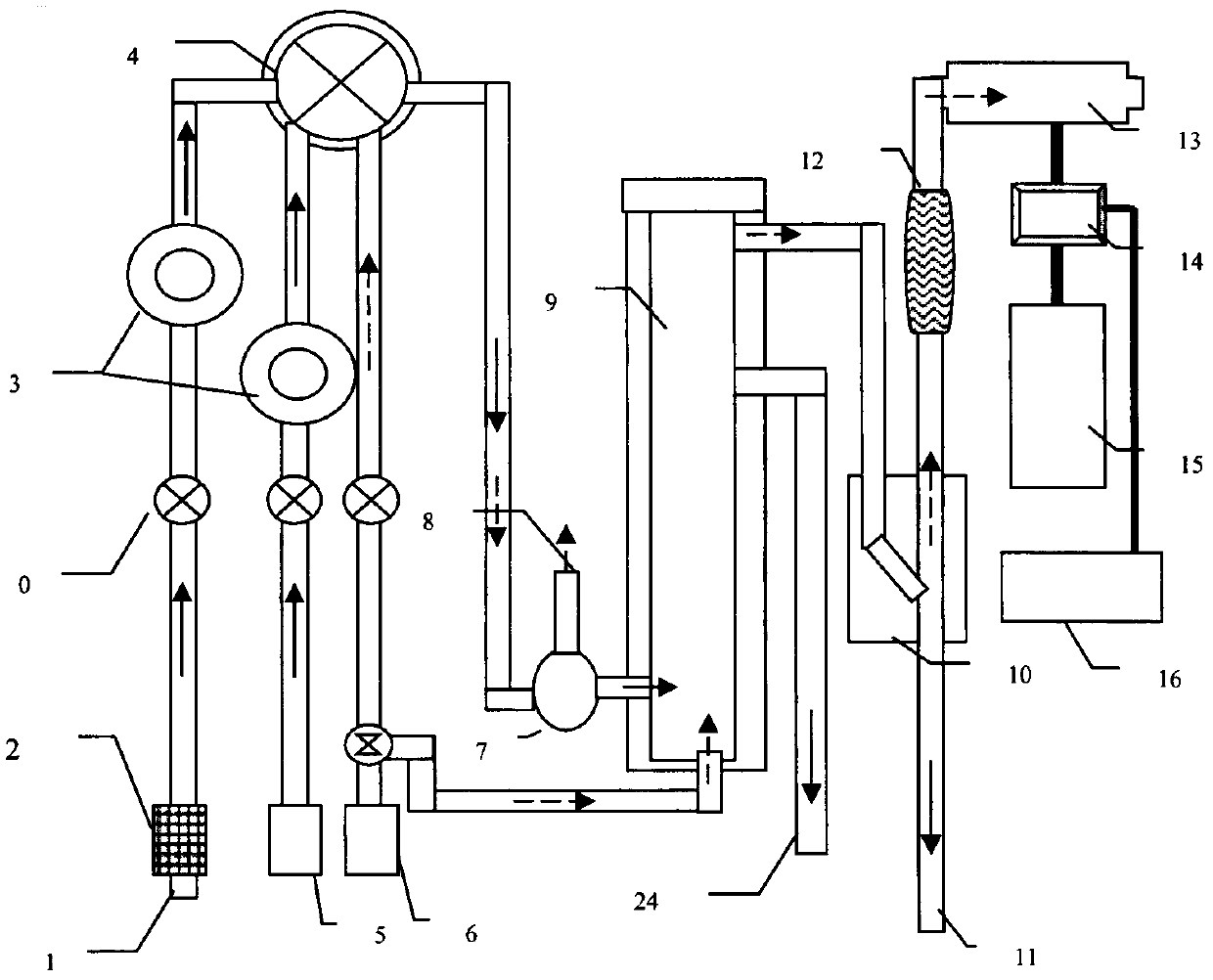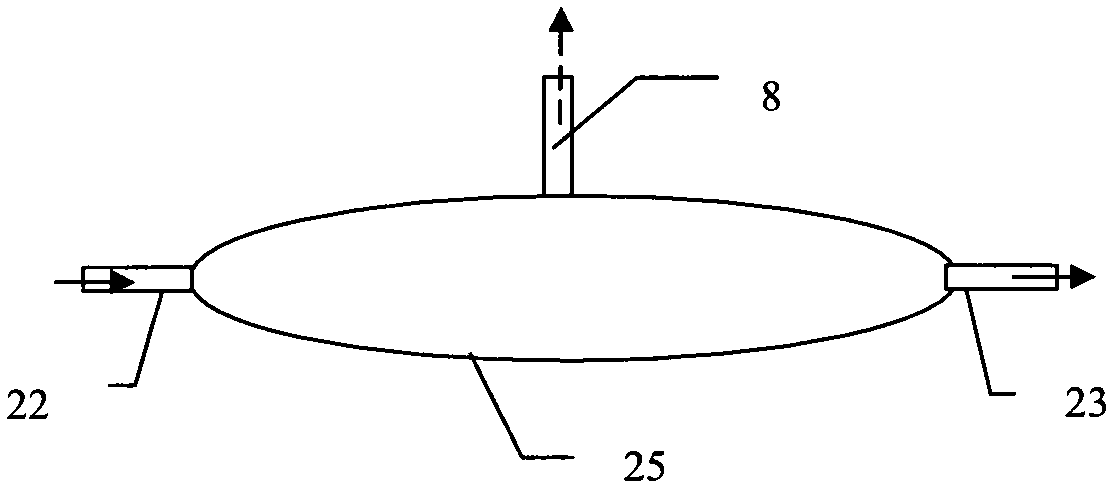Device and method for continuously determining total organic carbon (TOC) concentration of sea water and high-salinity waste water
A high-salt wastewater and high-concentration technology, applied in the preparation of test samples, etc., can solve the problems of insufficient complete elimination, limited capacity, needle core blockage, etc., and achieve strong recyclability, large absorption capacity, and long action time Effect
- Summary
- Abstract
- Description
- Claims
- Application Information
AI Technical Summary
Problems solved by technology
Method used
Image
Examples
Embodiment 1
[0020] Example 1 A device for continuously measuring the TOC concentration of seawater / high-salt wastewater mainly includes a sampling device, an acidification reactor 4, a simple gas-water separator 7, an oxidation reactor 9, a dehydrator 10, an ion trap 12 and organic CO connected in sequence. 2 The detector 13, the simple gas-water separator 7 is provided with an exhaust port 8, and the dehydrator 10 is provided with a drain port 11. The sampling device mainly includes a sampling port 1, a reagent bottle 5, and a carrier gas cylinder 6. The sampling port 1 is connected to the acidification reactor 4 through a filter 2, a flow meter 0, and a peristaltic pump 3; The pump 3 is connected to the acidification reactor 4, and the carrier gas cylinder 6 is divided into two paths by a three-way solenoid valve, one of which is connected to the acidification reactor 4. The reagent bottle 5 contains a solution prepared by proportioning acidulant and oxidant. The acidification reactor 4 ...
experiment example 1
[0031] Experimental example 1 Distilled water, sea water and salt water with different sodium chloride content were prepared into 25mg / L, 50mg / L, 75mg / L, 100mg / L, 150mg / L, 200mg / L potassium hydrogen phthalate standards. Solution, and then use the device and method of Example 1 to perform TOC measurement. The results are shown in Tables 1, 2, and 3 respectively.
[0032] Table 1 TOC measured values of distilled aqueous solutions of potassium hydrogen phthalate with different concentrations
[0033]
[0034] It can be seen from Table 1 that the relative error (RSD) of the TOC measured value of the standard solution of potassium hydrogen phthalate in distilled water by this method is less than or equal to 0.5%, indicating that the measured value has high stability and good reproducibility.
[0035] Table 2 TOC measured value of different concentrations of potassium hydrogen phthalate sea water solution
[0036]
[0037]
[0038] The above results show that the relative error RSD of thi...
PUM
 Login to View More
Login to View More Abstract
Description
Claims
Application Information
 Login to View More
Login to View More - R&D
- Intellectual Property
- Life Sciences
- Materials
- Tech Scout
- Unparalleled Data Quality
- Higher Quality Content
- 60% Fewer Hallucinations
Browse by: Latest US Patents, China's latest patents, Technical Efficacy Thesaurus, Application Domain, Technology Topic, Popular Technical Reports.
© 2025 PatSnap. All rights reserved.Legal|Privacy policy|Modern Slavery Act Transparency Statement|Sitemap|About US| Contact US: help@patsnap.com



